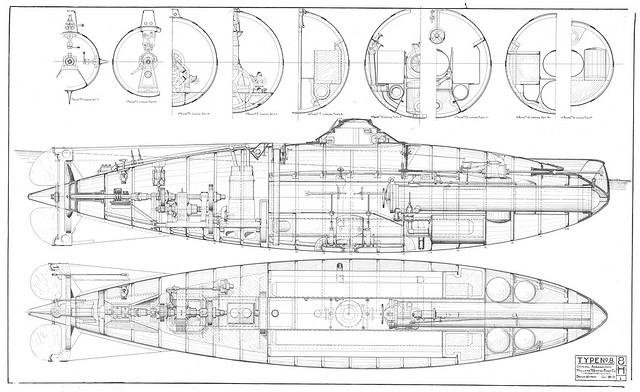Air Independent Propulsion is a must for Australia’s next submarines
Posted By Geoff Slocombe on June 18, 2015 @ 13:00
The definitive statement on the roles and required capabilities of future Australian submarines must await the release of Defence White Paper 2015 and associated Force Posture Review, both due in August-September this year.
It seems likely that Australia’s area of operational submarine missions, as opposed to training and exercises, will be focused principally on our north-west approaches; the Malacca, Singapore, Sunda and Lombok Straits; and the South China Sea.
Potential roles for the future submarines could include intelligence gathering, surveillance, reconnaissance, insertion and extraction of divers or special forces, attacking enemy submarines and their surface warships, mine laying, together with other littoral or choke point operations. Effective prosecution of these roles will necessitate that the submarines go about their business undetected—meaning that apart from transits between their Australian base to around 200 nautical miles from their operational area, they’ll need to spend all of their actual mission time underwater.
A conventional diesel electric submarine travelling relatively slowly still has to recharge its lead acid accumulators every few days, by coming up to periscope depth so that its snorkel can take in air for the diesel generators. Modern surface, airborne and satellite sensors have become so sensitive that they can readily track surface wakes, acoustic and thermal signatures caused by snorkels, diesel engines and their exhausts. Submarine designers and Navy submariners use an indiscretion ratio to indicate the proportion of mission time a submarine is detectable while charging its batteries. For conventional modem submarines the indiscretion ratio ranges typically 7-10% on patrol at 4 knots, and 20-30% in transit at 8-10 knots.
This is where Air Independent Propulsion (AIP) comes in. It offers the possibility of increasing underwater endurance by a factor of up to three or four, which reduces the indiscretion ratio significantly.
AIP isn’t a new concept. In 1945, the Allies captured German submarine U1406 which used an early form of AIP.
Fast-forward to the 1990s when Sweden’s Kockums developed their Stirling AIP engine which was fitted to three new build submarines of the HSwMS Gotland-class. In 2005 the US Navy leased Gotland initially for a year and were devastated to discover that it could penetrate their defensive screen undetected when running under AIP. On one famous occasion Gotland got close enough to new CVN Ronald Reagan to take photos of it, then slipped away unnoticed.
If an AIP-fitted submarine realises it’s been detected, it has the escape option of diving deep and slowly, making its silent escape over several days. Underwater endurance can be up to 20 days.
AIP is about two separate choices. The kinds of batteries used in a submarine’s design, and the technology available to generate electricity deep underwater, which directly drives the submarine’s engine and supplies other electrical requirements.
Once batteries are chosen for a design, they can’t be swapped for different technologies. Currently, focus is on the promise of Lithium ion Batteries (LiB), which offer significant weight, space and power advantages over classic lead acid accumulators.
Power required to propel a submarine is proportional to the cube of hull speed. To cruise at low speed, LiBs require about half the space of classic accumulators, but at higher speeds they require around 25% of classic accumulator space to provide the same propulsive power. This means more LiBs can be fitted in place of classic accumulators, offering greater underwater endurance. Dependent on their chemistry, if LiBs become overheated or overcharged they can experience thermal runaway, damaged cells and even a fire or explosion. Therefore, the right selection of chemistry—together with stringent control systems—are required to prevent this happening.
The three Competitive Evaluation Process (CEP) contenders should consider offering different AIP electricity generation systems to power the main engine and other electrical systems deep underwater, rather than off batteries. Japan traditionally has used the Kawasaki Kockums Stirling engine and France the MESMA system, both driving generators and less efficient than Germany’s HDW/Siemens fuel cell plant configurations which produce electricity directly.
The invisibility AIP offers is an obvious advantage, but are there any downsides? Yes. Installing AIP increases length and weight of submarines; requires pressurised liquid oxygen (LOX) storage on-board and supply for all three technologies; MESMA and the Stirling engine have some acoustic noise from moving parts; and production costs increase the submarine’s unit cost by around 10%.
DWP 2015 has to analyse and make recommendations for capabilities still needed in place and effective into the 2050s and beyond. Given the stealth advantages of AIP in most likely roles, is this a capability that Australia can afford not to choose?
A SEA 1000 project team spokesperson advised that:
The Competitive Evaluation Process offers participants the opportunity to propose the use of technologies they consider best meet Australia’s requirements for the Future Submarine, which extend to considerations of through-life costs, schedule, risk, design and safety, and sustainment as well as capability.
AIP has not been specified as required in the CEP creating uncertainty about how much importance Defence attaches to this capability in the Future Submarine Program. Surely they would want their next submarines to be significantly less detectable, and therefore much more effective, when carrying out missions close to potential adversary locations.
Let’s hope the Government makes the right decision on AIP capability, and it becomes a mandatory requirement.
Article printed from The Strategist: https://aspistrategist.ru
URL to article: /air-independent-propulsion-is-a-must-for-australias-next-submarines/
URLs in this post:
[1] Image: https://aspistrategist.ru/wp-content/uploads/2015/06/4403874969_0f64d099a4_z.jpg
Click here to print.
